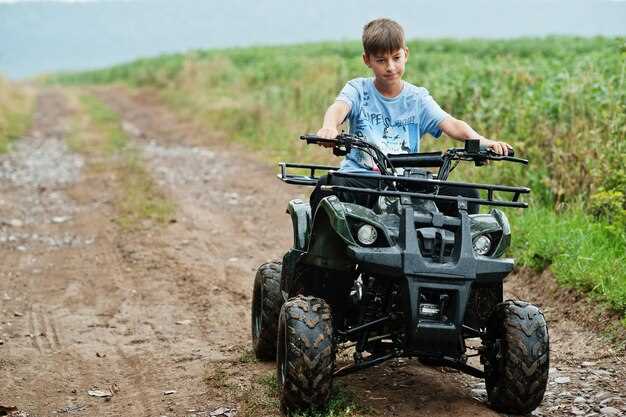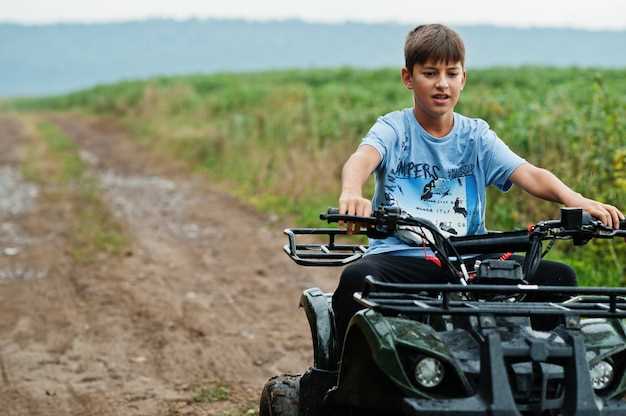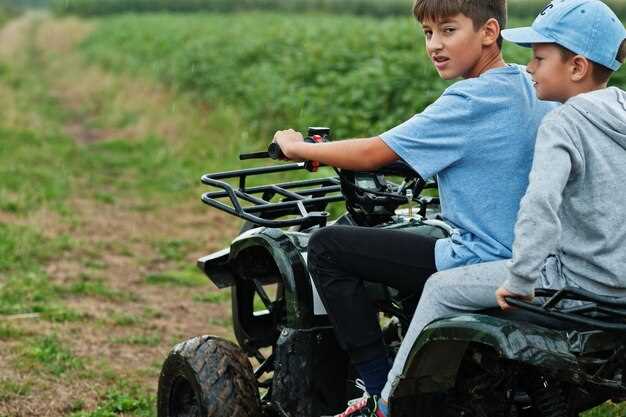
As the popularity of all-terrain vehicles (ATVs) grows among families, ensuring that kids develop safe riding habits has become a crucial responsibility for every parent and guardian. ATVs can provide thrilling experiences and the opportunity for outdoor adventures, but they also pose significant risks if not handled properly. Teaching children the fundamentals of safe riding can foster a sense of responsibility and caution, making them informed riders for years to come.
Rider education is at the core of establishing safe ATV habits. Kids must learn not only the basic operation of the vehicle but also the importance of wearing protective gear and understanding the terrain they ride on. Parents should emphasize the need for responsibility while riding, ensuring that children understand that safety should always come first. This education helps build a strong foundation for responsible riding behavior.
Beyond basic skills, instilling a sense of respect for the ATV’s power and the potential dangers of riding is vital. Setting rules for riding behavior and discussing safety practices, such as riding with a buddy and avoiding excessive speeds, can significantly reduce the risk of accidents. By taking the time to teach kids about safe ATV riding habits, parents can help cultivate a generation of responsible and safe riders, ensuring that their adventures remain fun and enjoyable.
Selecting the Right ATV for Your Child’s Age and Skill Level
Choosing the appropriate ATV for kids is essential to ensure safety and enhance the riding experience. The right vehicle not only matches their age, but also aligns with their skill level, allowing young riders to develop confidence and achieve better control.
For younger children, typically ages 6 to 12, consider ATVs specifically designed for that age group. These machines usually have a lower engine capacity, making them easier to handle. A youth ATV with an engine size of 70cc to 110cc is ideal for beginner riders. Such options provide manageable power, ensuring kids can focus on learning safe riding practices without being overwhelmed.
As kids grow and acquire more experience, transitioning to a larger ATV is crucial. For pre-teens and teens aged 13 and up, consider ATVs with engines ranging from 110cc to 250cc. These vehicles not only offer more power but also come with enhanced features that support advanced riding techniques. Ensure that the ATV has adjustable speed restrictors to control the power output as the rider gains confidence and proficiency.
Safety gear is also a vital consideration when selecting an ATV for children. Regardless of age or skill level, riders should wear helmets, goggles, gloves, and protective clothing to mitigate injury risks. Introducing safe habits, such as using safety gear and reinforcing rules regarding riding areas, will further enhance their education on responsible riding.
Lastly, it is important to involve your child in the selection process. Allowing young riders to express their preferences and understand the different ATV options fosters an engaging learning environment. This participation not only empowers them but also reinforces their commitment to safe ATV riding practices.
Essential Safety Gear Every Young Rider Should Wear

Every young rider embarking on an adventure with an ATV should prioritize safety by wearing essential protective gear. This equipment significantly reduces the risk of injuries and ensures a safer riding experience for kids.
First and foremost, a properly fitted helmet is crucial. A DOT-approved helmet protects the rider’s head from impacts and enhances visibility. It is important to choose a helmet designed specifically for ATV use, featuring good ventilation and a secure fit.
Next, eye protection is vital for young riders. Goggles or a face shield can guard against dust, debris, and insects while riding. Clear visibility is essential for safety, especially when navigating through rough terrains.
Moreover, wearing a long-sleeved shirt and long pants is advisable to shield the skin from abrasions and sun exposure. Durable fabrics reduce the likelihood of injuries during falls or scrapes, making them a wise choice for kids.
Protective gloves are also important for a young ATV rider. They provide a better grip on the handlebars and protect the hands from blisters, cuts, or bruises. Selecting gloves that are comfortable and flexible enhances control during rides.
Footwear should not be overlooked. Sturdy boots with ankle support and a non-slip sole are essential for providing traction and protection. They ensure that the rider’s feet remain secure and safe while operating the vehicle.
Finally, additional body armor, including chest protectors and knee pads, can offer further safety for young riders. These protective gear pieces absorb shock in the event of a fall, providing extra security and confidence for kids as they learn to navigate an ATV.
In summary, equipping young riders with appropriate safety gear is paramount for safe ATV riding experiences. Ensuring they wear helmets, goggles, protective clothing, gloves, sturdy boots, and optional body armor can help minimize the risks associated with ATV riding.
Tips for Teaching Safe Riding Techniques and Rules

Education for safe ATV riding is crucial to ensure the well-being of kids. Instilling proper techniques and understanding of rules can prevent accidents and promote responsible riding habits. Here are essential tips for teaching safe ATV riding techniques and rules:
- Start with the Basics: Begin by explaining the fundamental components of an ATV, including its controls, safety features, and the importance of wearing protective gear, such as helmets and pads.
- Environment Awareness: Teach kids to be aware of their surroundings. Discuss the significance of riding in designated areas and the potential hazards, like pedestrians and other vehicles.
- Proper Riding Technique: Instruct children on how to maintain balance while riding. Emphasize the importance of keeping their feet on footrests and hands on the handlebars at all times.
- Speed Control: Educate kids about the importance of maintaining a safe speed. Provide a clear explanation of how different terrains can affect their riding speed and stability.
To further develop their riding skills, consider the following:
- Practice in a Controlled Environment: Start with slow, manageable trails that are free from obstacles. Gradually introduce more challenging terrains as they gain confidence.
- Teach Respect for Rules: Reinforce the importance of adhering to all riding rules, including local laws and regulations regarding ATV use.
- Model Safe Behavior: Lead by example. Demonstrate safe riding techniques, including proper starting and stopping procedures, as kids learn by observing.
By emphasizing education for ATV riding, kids will not only enjoy their experience but also develop lifelong safe riding habits.
 Skip to the content
Skip to the content 